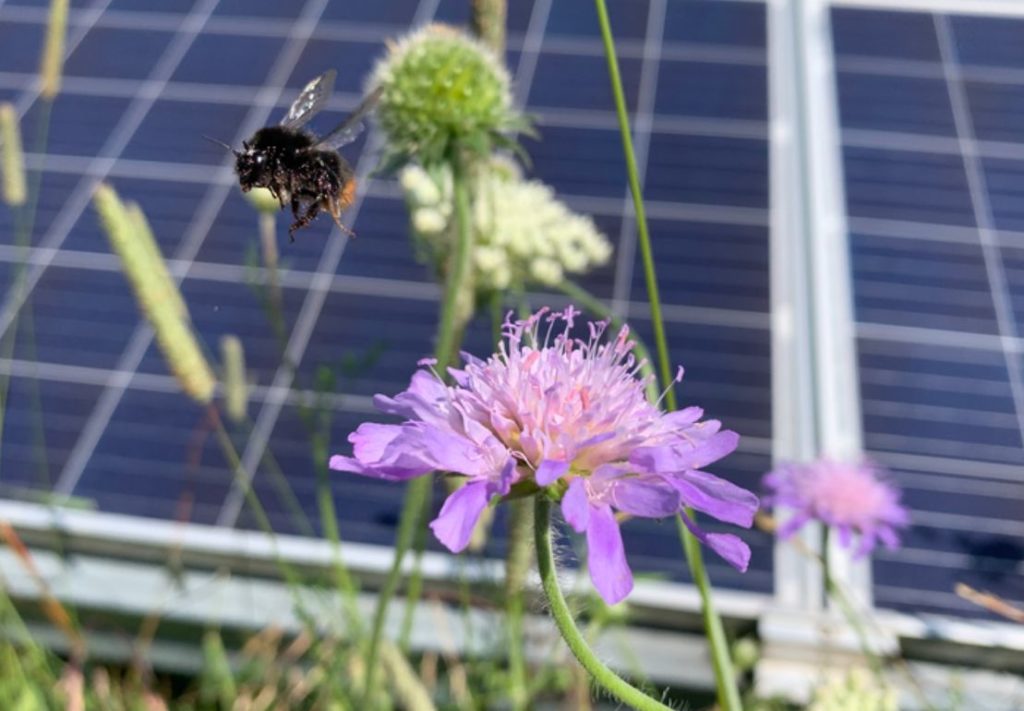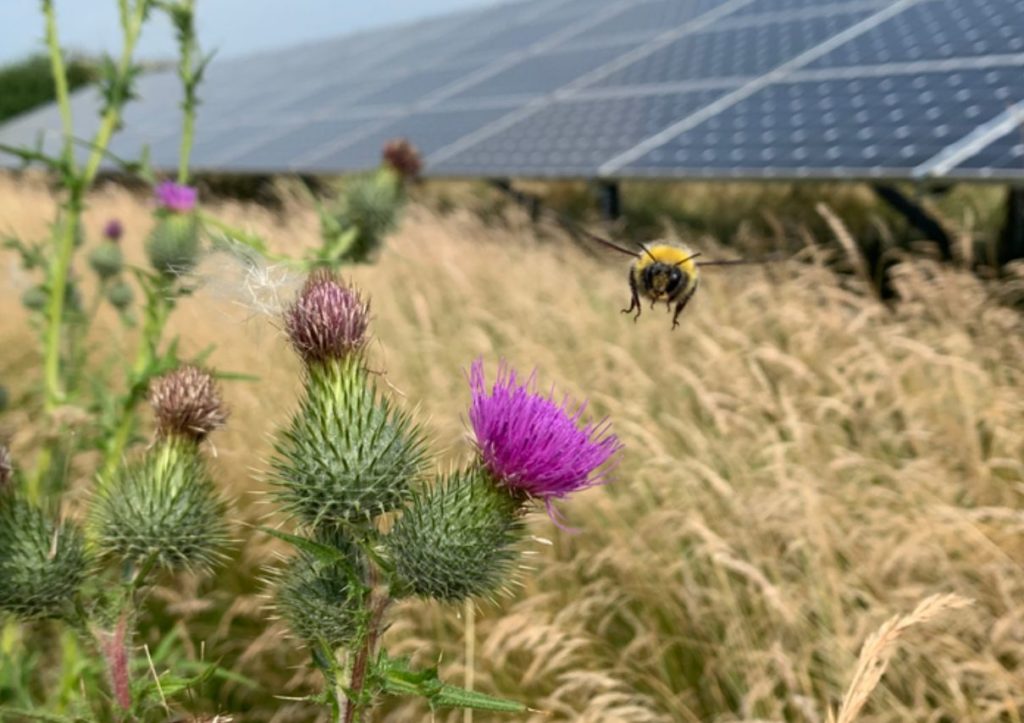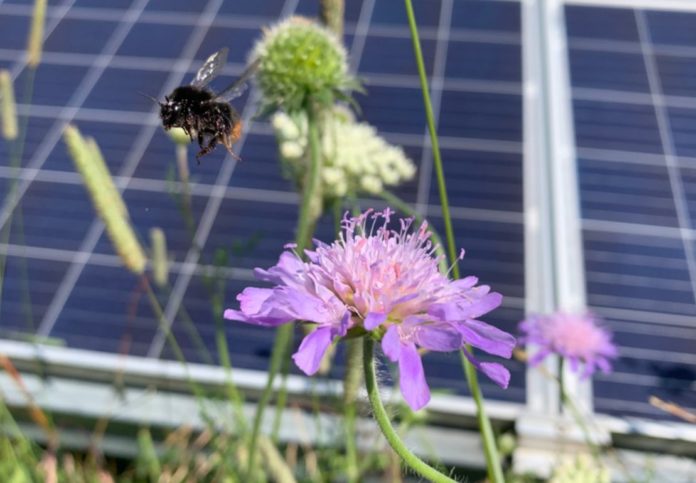Simple management tweaks could boost ground-nesting bumblebee numbers in the parks and nearby areas, in addition to producing renewable energy, says a new study.
Lancaster University researchers explored several management scenarios that delivered varying degrees of resources for bumble bees using a model that emulated bumblebee foraging in UK solar parks.
According to their findings, solar park property managed as meadows would support four times as many bumble bees as solar park area managed as turf grass, because meadows offer the most resources.
They also discovered that large, extended, and resource-rich solar parks could increase bumble bee density up to 1km outside of the parks, providing pollination services to crops on nearby agricultural land.

Hollie Blaydes explained: “Our findings provide the first quantitative evidence that solar parks could be used as a conservation tool to support and boost pollinator populations. If they are managed in a way that provides resources, solar parks could become valuable bumble bee habitat.
“In the UK, pollinator habitat has been established on some solar parks, but there is currently little understanding of the effectiveness of these interventions. Our findings provide solar park owners and managers with evidence to suggest that providing floral and nesting resources for bumble bees could be effective.”
Increasing the population of bumble bees in solar parks could help surrounding crops by increasing pollinator visitation. Farmers with solar parks on or near their land can consider planting pollinator-dependent crops near these pollinator-rich places.
Solar parks in the United Kingdom are frequently placed among highly managed agricultural landscapes, increasing the possibility for solar parks to serve as bumble bee refuges.
In the United Kingdom, the area of land used for solar parks is expanding, enhancing the opportunity to utilize this property for extra benefits. Solar parks on the ground currently cover 14,000 hectares. The Climate Change Committee estimates that an additional 54GW of solar PV will be required to fulfil net-zero ambitions in the UK, requiring a land use change of 90,300 hectares for solar parks.

The management of solar parks in a way that benefits bumble bees and other wildlife has challenges. For example, there are costs associated with building and preserving pollinator habitats, and the solar sector currently has no financial incentives to do so. It’s believed that payments for ecosystem services in the post-Brexit agricultural bill will offer a framework for this.
Business structures may also be a barrier. Hollie Blaydes added: “Management of solar parks is often outsourced to external companies where contracts are typically around two years long. This, along with frequent changes in ownership, means that management regimes could be changed as the solar park or management contract changes hands. This could be challenging when trying to establish and maintain habitats over longer time scales.”
The researchers used a geographic information system (GIS) to create solar parks of various sizes, shapes, and management approaches based on real UK examples in real UK landscapes in order to understand how solar park management could impact bumble bee density within solar parks and surrounding areas.
This GIS was integrated with Poll4Pop, a cutting-edge pollinator model that forecasted bumble bee density and nest density within the solar parks and buffer zones.
The researchers next utilized statistical methods to look at differences in bumble bee density and nest density among the model’s various solar parks.
The researchers propose that data be collected on real-world solar parks to better understand pollinator reaction to management strategies in order to test the conclusions of their model.
Other key pollinators such as solitary bees, hoverflies, butterflies, and moths were not considered by the researchers, who focused solely on ground-nesting bumblebees.
To understand how various populations can benefit from solar park management, multiple modeling approaches would be required due to their different resources and foraging behaviors.
Image Credit: Hollie Blaydes
You were reading: Solar parks could be used to support and boost pollinator populations, researchers say
